|
Carrying your gear.
Making something to carry your gear in from scratch in the wild is not always easy.
A store bought rucksack is the answer for most people. A rucksack doesn’t need to be expensive.
I bought an old, but unused, Norwegian army Bergen for 100 NOK at an Army surplus store.
I’m sure that other surplus stores around the world also have cheap, good rucksacks in their stock.
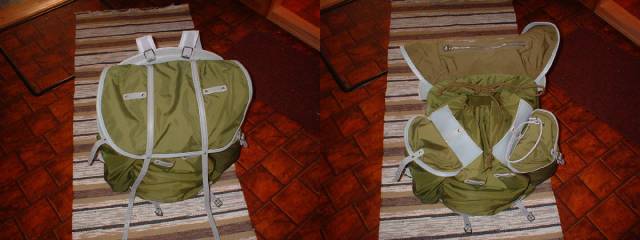
I don’t know the size of mine (probably around 50-60 litres), but it is big enough to hold the stuff most people need for a week in the wild, at least in the summer.
I`ve carried the neck of a bull moose in it and that fits well inside and the straps was good enough for the weight (20-25 kilos). Over longer hauls I would prefer wider straps though.
A trick used in the army was to cut of 6-7 centimeters of the sleeping mat, cut the strip in two pieces and tape it to the rucksack straps.
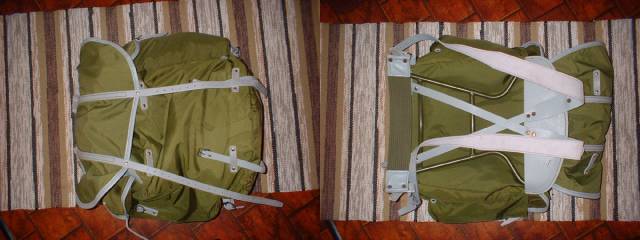
The rucksack has two side pockets, a small compartment in the lid and a large main compartment.
Skies, axes or other long objects can be stuffed between the side pockets and the main compartment.
There are also two leather straps for attaching gear over the two side pockets.
I’ve later modified it attaching three small pockets from an Alice pack in front of the rucksack.
There are lot of rucksacks that are better to carry, but few at that price.
And besides it doesn’t weigh much, and I use it both on day trips and longer treks.
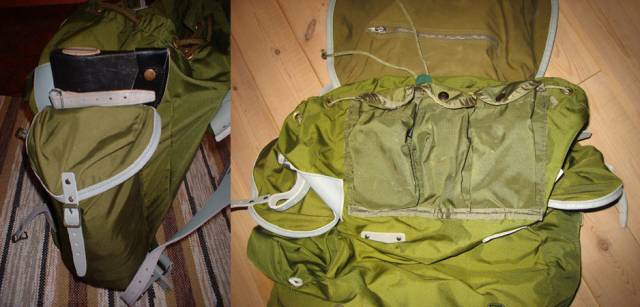
A tip is to use a large garbage bag on the inside of the main compartment, keeping your gear dry. The rain will eventually seep trough the rucksack, even if it is waterproofed.
I also like to pack my stuff in separate bags (preferably in different colours). Spare clothes in one, fishing gear in another and so on. That way I can quickly find my things when I need them.
Another small rucksack I use, mostly for day trips, an internal frame pack from Eagle sharp (China made?).
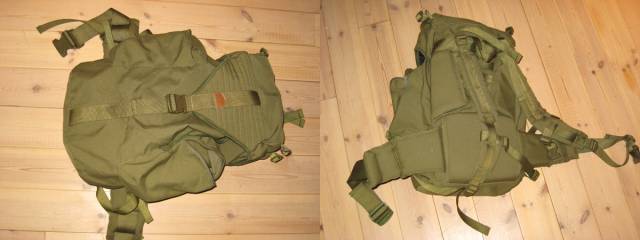
I`ve used this pack a lot and both the seams and fabric is strong.
It has one main compartment, with a flap for holding a vacuum bottle, two side pockets and a compartment in the lid.
The pack is very comfortable, but I have not tried it with a lot of weight. I doubt you will be able to stuff much heavy objekts in it anyway, as it is just 30 litres.
The pack is however plenty big enough for most day trips or light overnighters.
One drawback with this pack is that the lid is fastened with only one strap and buckle, and stuff stored under the lid (jackets or sweaters) tend to fall out.
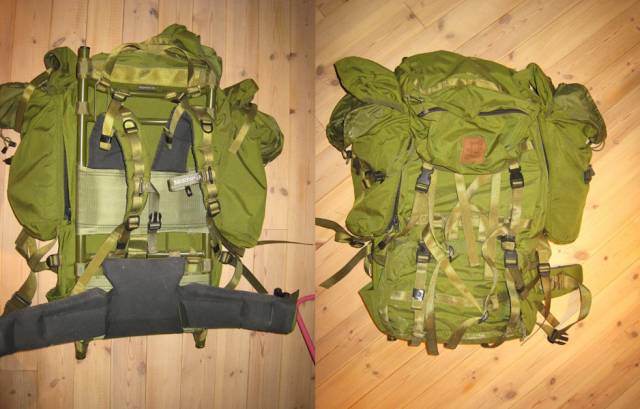
I also own a Norrøna Recon pack (picture above). It is an awesome rucksack.
External frame, wide hip belt, very good to carry and a volum of 125 litres (with side pockets).
The lid has two pockets, one internal, under the lid, and one in the front of the lid. Both zip locked.
The main compartment can be divided into two compartments. The lower compartment is then reached via a zipper in the lower front of the ruck.
I only use it in a one compartment configuration.
The main compartment also has a snow lock to prevent snow from blowing ito the rucksack.
I use it less often than my other rucksacks. It is just too big for most of my use.
It is more of a ruck for long expeditions, or hauling very heavy loads, and when using it I tend to fill it with a lot of stuff I don’t use.
It is my number one choise in wintertime though, when I`m packing a tent, ice fishing gear, extra clothes and a sleeping bag.
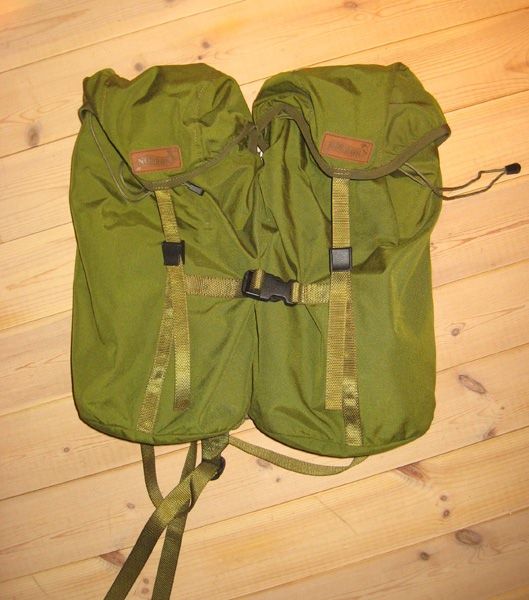
The side pockets are zipped to the main compartment and could be taken off and joined together to form a two compartment day sack (volum 24 litres). A handy thing one might say, but you will not find room for larger items in it.
Under the big pockets I have attached two smaller ones. These pockets are used for camera, bug spray, binoculars, first aid kit and other useful items. The pockets are removable and can be used as belt pouches if needed.
The Norrøna rucksack is also too heavy to use on daytrips. It weighs about 3-4 kilos in itself. And it has a hefty price tag. The bag is used by our armed forces, mostly special units.
When you learn to take along just the items you need (I let you know when I’ve learned it J), you will see that your rucksack doesn’t need to be very big.
If you for a reason don’t have a rucksack, but do have a tarp or blanket, you could make a blanket roll to carry your gear in. It doesn’t hold a lot of gear, only the essentials. This method has been used by soldiers in various armies in earlier times.
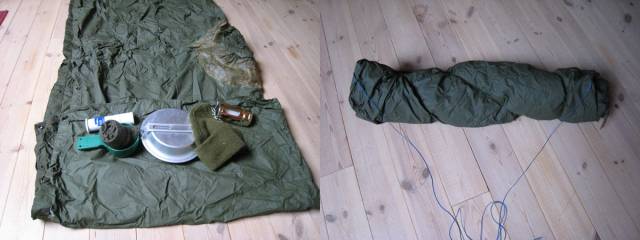
Fold your tarp or blanket (or poncho as I use for illustration). Lay your gear along the edge of the blanket and roll the blanket up. Tie off in both ends and in the middle if needed. Connect the two ends of the roll with a piece of string and toss it over your shoulder and you’re on your way.
An old bag could also be used to make a primitive rucksack. You need a bag (plastic, jute etc.), a little rope (about 2 metres) and three round pebbles. The first pebble is laid on the inside near the opening of the bag. The rope is the fastened on the “inside” of the stone. The stone stops the rope from slipping of the bag.
(Bilde)
The two other stones are then used to secure the rope to the bottom corners of the bag. Make sure the loops are long enough to carry the bag on your back.
For a more comfortable pack one could make a frame and attach the bag to it.
(Bilde)
|